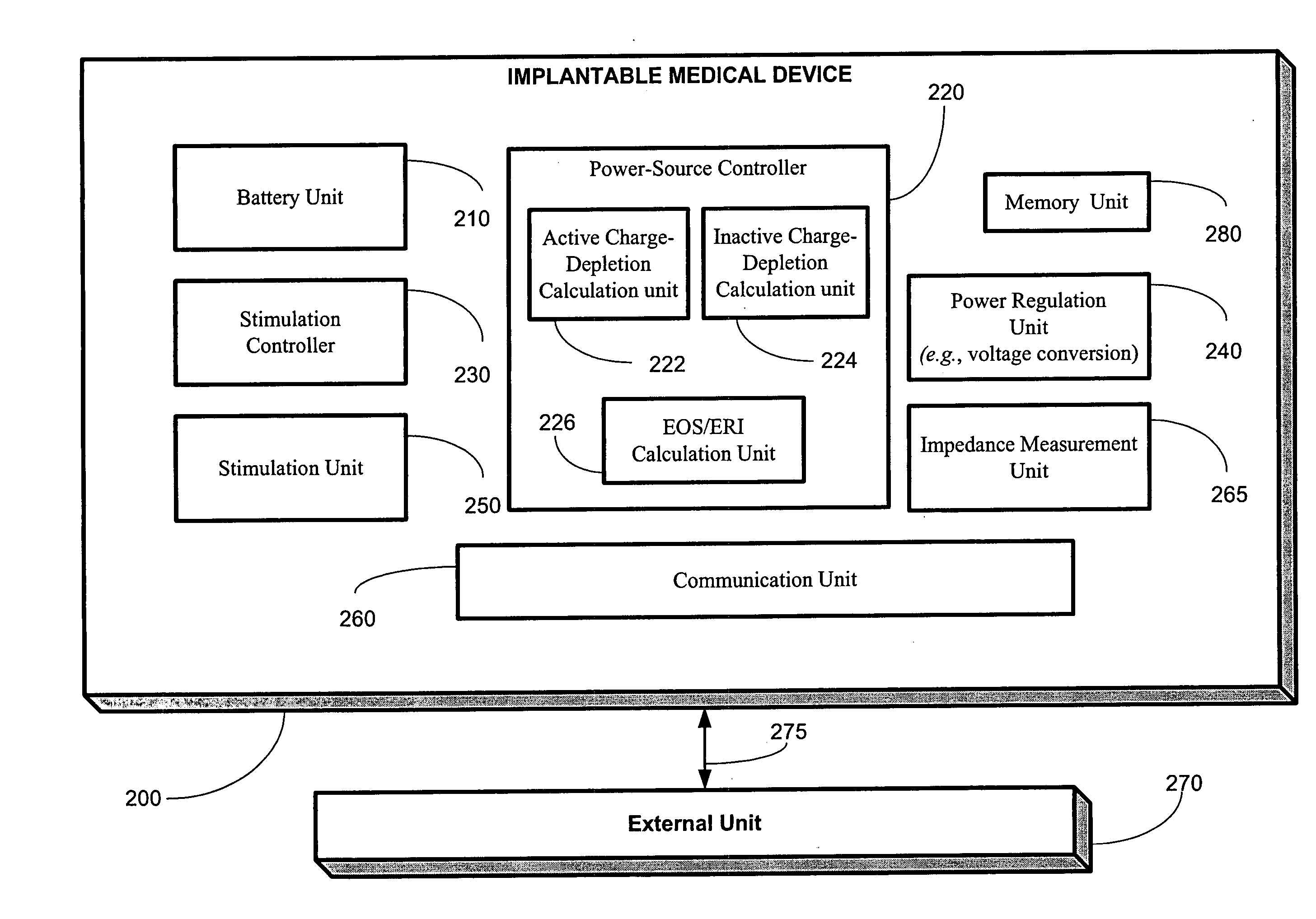Impedance measurement for an implantable device
a technology of implantable devices and impedance characteristics, which is applied in the field of implantable medical devices, can solve the problems of complex custom integrated circuits, high cost, and specific to intended use, and the measured battery characteristics do not have monotonically changing values with respect to remaining charge, and the present status of the battery cannot be accurately and unambiguously determined from the measured battery characteristi
- Summary
- Abstract
- Description
- Claims
- Application Information
AI Technical Summary
Problems solved by technology
Method used
Image
Examples
Embodiment Construction
[0040] Illustrative embodiments of the invention are described herein. In the interest of clarity, not all features of an actual implementation are described in this specification. In the development of any such actual embodiment, numerous implementation-specific decisions must be made to achieve the design-specific goals, which will vary from one implementation to another. It will be appreciated that such a development effort, while possibly complex and time-consuming, would nevertheless be a routine undertaking for persons of ordinary skill in the art having the benefit of this disclosure.
[0041] Embodiments of the present invention provide methods and apparatus for monitoring and / or estimating the electrical charge depletion of an implantable medical device (IMD). Estimating battery life may be based upon estimated future charge depletion and actual past charge depletion. Embodiments of the present invention provide for an elective replacement indicator (ERI) signal to provide a ...
PUM
 Login to View More
Login to View More Abstract
Description
Claims
Application Information
 Login to View More
Login to View More - R&D
- Intellectual Property
- Life Sciences
- Materials
- Tech Scout
- Unparalleled Data Quality
- Higher Quality Content
- 60% Fewer Hallucinations
Browse by: Latest US Patents, China's latest patents, Technical Efficacy Thesaurus, Application Domain, Technology Topic, Popular Technical Reports.
© 2025 PatSnap. All rights reserved.Legal|Privacy policy|Modern Slavery Act Transparency Statement|Sitemap|About US| Contact US: help@patsnap.com



